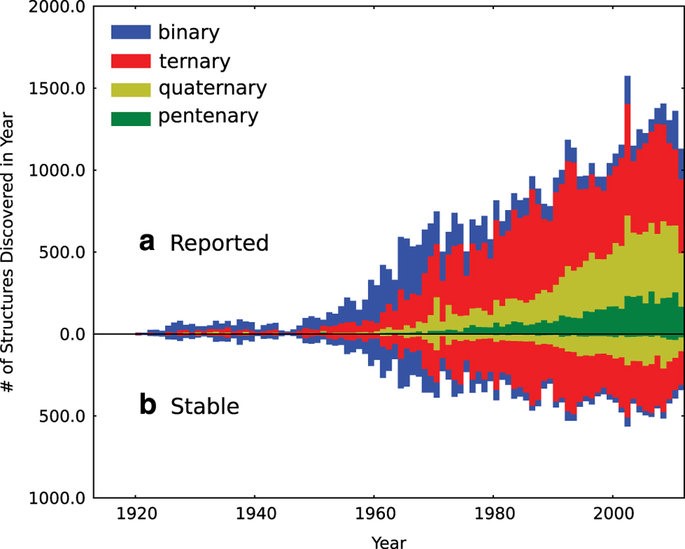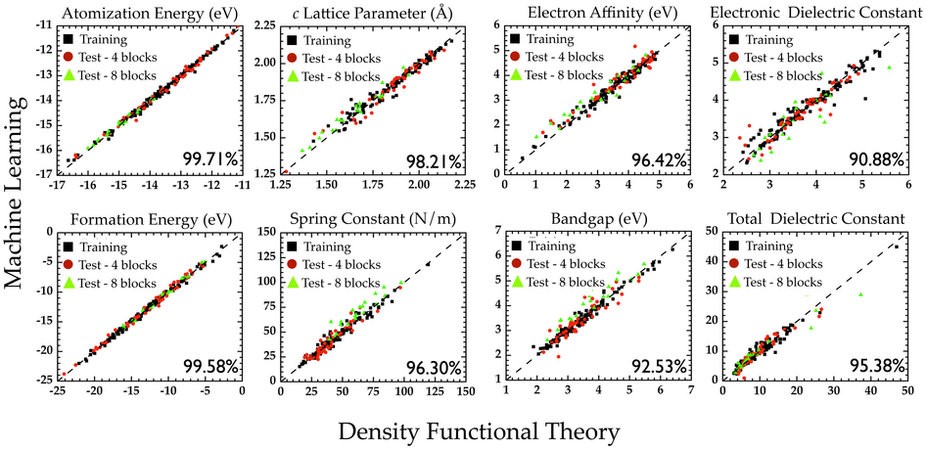Machine learning for material discovery and material design
Machine learning for material discovery and material design
Promotor(en): S. Cottenier, T. Verstraelen /18MAT01 / Solid-state physicsModern physical and chemical insights allow us to finetune the properties of materials with a level of control until recently thought impossible. This knowledge can even be used to design entirely new materials, capable of exhibiting highly exotic properties. The more exotic the material however, the less our knowledge of existing materials will be useful. This makes the experimental discovery of these materials still largely dependent on luck and often slow and costly.
The discovery rate of materials can be greatly sped up by performing so-called high-throughput ab initio calculations. Using the laws of quantum mechanics, the existence and properties of large sets of new materials are predicted. They can be performed very accurately, but at an immense computational cost. This is why, often, large scale screening will sacrifice some accuracy to increase the number of calculations which can be performed. In this way, large-scale trends in the search space can be exposed and interesting regions and outliers can easily be identified.
Nonetheless, performing large numbers of ab initio calculations even using modern automation software on supercomputing resources remains intense. Machine learning (ML) offers a way out. By detecting patterns in highly complex data, ML can make predictions at a fraction of the computational cost of ab initio calculations. Despite having only recently entered the field of materials science, it has already been used to predict many material properties. These include simple ones such as stability, bulk modulus and bandgaps, but also complex properties like thermoelectric or superconductive performance. These results only represent early developments in an exciting new field which makes it the perfect time for a motivated young researcher to jump in and make a difference.
Goal
In this master’s thesis you will be provided with a database of new complex materials, previously calculated within our group. It contains information on the stability, crystal structure, electronic and mechanical properties of the compounds. Simple machine learning models were used to navigate the screening space of these materials in search of new stable materials. You will use this database to construct so-called features, simplified representations of the information provided by the simulations and use advanced machine learning methods to create accurate models reproducing quantum mechanical results. Using your new models you will then have the option to perform a more directed search or proceed to even more complex properties. The goal is to facilitate the discovery and characterization of new materials and in this way aid experimentalists in their journey of discovery.
Context for Engineering Physics students
Physics aspect: use of quantum mechanical methods to model solids.
Engineering aspect: application to the properties of crystalline materials and use of machine learning.
- Study programmeMaster of Science in Engineering Physics [EMPHYS], Master of Science in Sustainable Materials Engineering [EMMAEN]ClustersFor Engineering Physics students, this thesis is closely related to the cluster(s) MODELING, MATERIALS, NANOKeywordsengineering computer science, electrical engineering, pure chemistry, physics and informaticsReferences
Sluydts, PhD dissertation (2016) https://biblio.ugent.be/publication/8082176
Agrawal et al., APL Materials 4, 053208 (2016); http://doi.org/10.1063/1.4946894
Faber et al., Phys. Rev. Lett. 117, 135502 (2016) http://doi.org/10.1103/PhysRevLett.117.135502
Oliynyk et al., Chem. Mater., 28, 6672 (2016) http://doi.org/10.1021/acs.chemmater.6b02905
Pilania. et al., Scientific Reports, 3, 2810 (2013) http://doi.org/10.1038/srep02810


